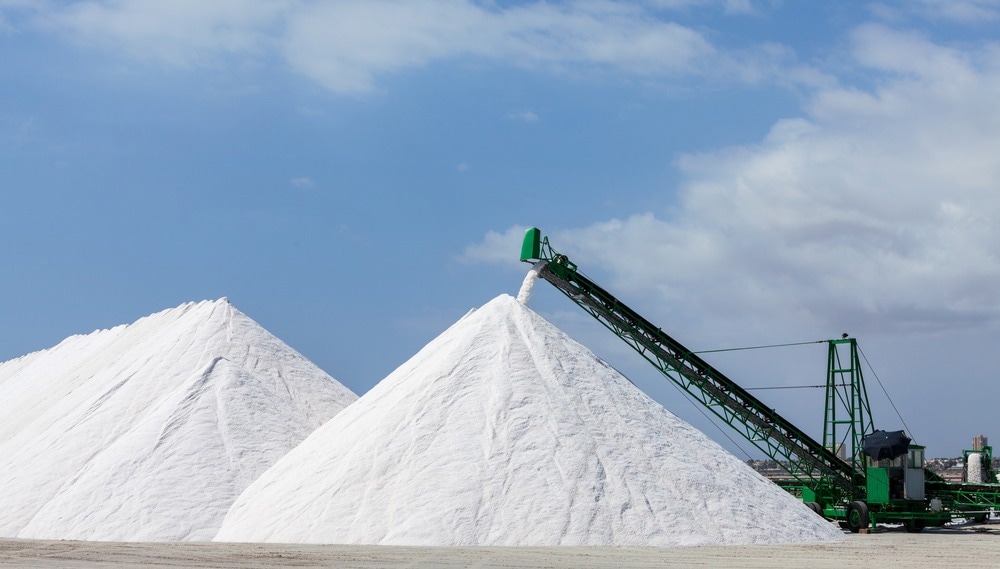Salt is essential for life. This substance has been mined for millennia, and indeed entire economies have been based upon the trade of salt, attesting to its importance throughout history for human society. This article will explore salt mines, how they are formed, their history, how they are mined, and their future.

Image Credit: Discovod/Shutterstock.com
The History of Salt Mining
Before the Industrial Revolution, salt harvesting was extremely laborious and expensive, making it a valuable commodity. Ancient societies harvested salt by boiling saline solutions over fires, with clay and lead pots used by different people worldwide.
In the Roman Empire, as well as in several other societies, salt was used as currency. Commonly used words in English today attest to the importance of salt to ancient peoples, with words such as salary and soldier having an etymological origin in using salt as wages to pay people.
In the Middle Ages, purpose-built roads, such as Northern Germany’s Old Salt Route, were used to transport salts from mines to ports.
Salt led to wars throughout history, with salt taxes being one of the factors leading to the French Revolution.
Anger at the monopoly on salt that the British government held in Colonial India played a role in the Indian independence struggle.
Today, salt mining is a complex, intensive, and vital industry worth around $30.74 billion. This essential commodity is mined globally, and evermore sophisticated methods are employed to extract salt from deposits.
Why Do We Mine Salt?
Salt has an immense social and cultural significance, and today is mined intensively to meet the demands of multiple industries.
One of its primary uses is as a food preservative and condiment in the food and hospitality industries and for domestic use as table salt. It is also used in ceremonies in religions such as Shintoism and Buddhism and has played a key role in Judeo-Christian traditions.
Solution mines near chemical plants, named brine wells, are used to provide salt to manufacture chemicals. Rock salt, an unrefined form, is used to grit roads in winter to prevent accidents and keep highways open during icing and snow events. Salt is used in animal feed, skincare products, cleaning products, weedkillers, and water softening.
How are Salt Mines Formed?
Aside from concentrated surface deposits from seawater and briny water evaporation, salt is found in deep underground deposits, remnants of ancient seas and water bodies that were subsequently buried by geological action. Deposits consist of horizontal beds of salt, which can have vast dimensions.
Salt Mining Equipment
Extracting this precious resource can be carried out in three ways: deep shaft mining, solution mining, and solar evaporation.
Deep shaft mining involves sinking shafts to the mine floor, and forming rooms via cutting, drilling, and blasting. Resources are then crushed and sent to the surface via a conveyor belt.
Solution mining involves the construction of wells above deposits, with water then injected into these wells. The salt dissolves in the water, which is extracted as brine. This brine is then evaporated to leave behind the salt. Solar evaporation is the simplest form of salt extraction, wherein sun and wind action evaporate seawater to recover the salt, which is then refined.
Many types of equipment are used in salt mining, including mechanical salt harvesting machines, continuous miners, brine transfer pumps, blast hole drills, conveyors, milling machines, crystallizers, and drying machinery.
Automated and autonomous systems are increasingly employed to harvest salt from mines and deposits.
Challenges with Salt Mining
Mining salt from deep deposits is a complex, dangerous endeavor, much like any other type of deep resource extraction.
Cave-ins, flooding, and infrastructure failure can present persistent dangers that must be mitigated by proper, safe mine planning. However, salt mining is generally considered safe, with the last collapse of a salt mine occurring in 1994.
Salt is a primarily finite resource, although a vast amount of salt can still be extracted, limiting the economic viability and lifespan of mining operations. Some salt deposits are much larger than others, making them much more economically viable.
Ontario’s Sifto mine, for example, is around 1,800 feet deep.
Another danger with salt mining is the possibility of workers becoming dehydrated due to the consistent contact with salt in their environment. Personal protective equipment and safe working protocols can mitigate this hazard.
The Future of Salt Mining
While a largely finite resource, there is plenty of scope and opportunity for the salt mining industry market to grow over the coming decades. The industry has a positive outlook, and growth in emerging markets attests to the long-term economic security of salt mining.
Much like the rest of the mining industry, a key concern within salt mining is sustainability and the mitigation of its environmental impact.
Multipurpose mining equipment is increasingly being employed in the sector, and the advent of technologies such as AI, big data paradigms, automation, and robotics provides a profound shift in the industry.
Controlling carbon emissions, reducing cost, and improving productivity are all vital areas of the evolution of the salt mining industry, which are being aided by introducing new equipment and sustainable working practices.
Due to its nature as a critical resource, the demand for salt will likely increase in the future as the world rapidly industrializes and urbanizes and the global population expands.
References and Further Reading
Canada Salt Group Ltd. (website) How are salt mines formed? [online] canadasalt.ca. Available at: https://canadasalt.ca/how-are-salt-mines-formed/
Lawson, J (2020) Everything you need to know about salt mines. Engineer Live [online] engineerlive.com. Available at: https://www.engineerlive.com/content/everything-you-need-know-about-salt-mines
Hill, M (2017) Salt Mining a Serious, Sometimes Dangerous Business. Industrial Equipment News [online] ien.com. Available at: https://www.ien.com/operations/news/20852535/salt-mining-a-serious-sometimes-dangerous-business
Salt Production Line (website) Salt Production Equipment [online] saltpoductionline.com. Available at: https://www.saltproductionline.com/salt-production-equipment/
Disclaimer: The views expressed here are those of the author expressed in their private capacity and do not necessarily represent the views of AZoM.com Limited T/A AZoNetwork the owner and operator of this website. This disclaimer forms part of the Terms and conditions of use of this website.